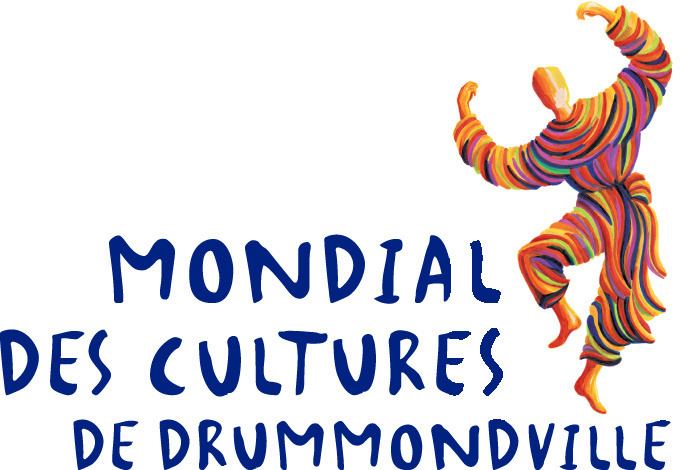Dates 7 Jul – 15 Jul 2017 | ||
 | ||
Similar Parc Woodyatt, Village Québécois d'Antan, Drummondville Arena QMJHL, Écomusée du fier monde, Parc Jean‑Drapeau | ||
Vid o officielle 2016 mondial des cultures
The Mondial des Cultures (formerly called the Festival Mondial de Folklore (World Folklore Festival) is a folk dance festival which is held every summer in early July at the Woodyatt Park, in Drummondville, a city located in the Centre-du-Québec region. The event was founded in 1982, after members of the folk ensemble Mackinaw had attended a similar festival in Dijon, France. The festival is in its 28th edition, and ran from July 9–19, 2009.
Contents
- Vid o officielle 2016 mondial des cultures
- Mission
- History
- The sites of the Mondial des Cultures
- The International Parade
- The artists
- Green is a part of the festivals culture
- References
During the eleven days of celebration, dozens of renowned artists and folk ensembles from around the world participate in this event which has attracted in recent years an average of over 300,000 visits per year. The annual budget is 2.2 million Canadian dollars and the economic benefits are estimated at 16.7 million Canadian dollars, according to a study conducted by the survey firm CROP in 2007. Such statistics make the Mondial des Cultures one of the four largest folk festivals in the world. It is also one of the figureheads of the Canadian Section of the CIOFF (International Organization of Folklore Festival and Traditional Arts), an organization in formal consultative relations with UNESCO.
Mission
The Mondial des Cultures aims to hold a high quality festival for spectators that are eager to discover cultures of the world while respecting its mission to:
"Develop and hold an international cultural event which displays the facets of various traditions of the world in a festival for the whole family where a brotherhood and universal spirit of peace prevails."
History
The very first edition of the Mondial des Cultures was founded in July 1982 thanks to the support of the Canadian Council of Folk Art (Conseil Canadien des arts populaires) and the Carrefour socio-culturel of Drummondville. The spontaneous support of the local population made the success of the event instantaneous and the festival rapidly became a reference in the Québec Folklore, in North America and around the world.
Twenty-seven years later, some 90 countries have been represented through dance and music performed by more than 430 different artistic groups. In 1998, a shift began with the change of name, to upgrade the image of the event and also to expand the programming, and focus more and more on the younger public and families. Immersed in an ocean of summer festivals and attractions of all kinds, the Mondial des Cultures has managed to distinguish itself by its content and its product. Member of RÉMI (Regroupement des événements majeurs internationaux du Québec) since 1999, the organization plays a key role in the biggest events in Québec.
The sites of the Mondial des Cultures
The Woodyatt Park, located in the heart of the City of Drummondville, is the historic place where all the festivities take place each summer. The variety of scheduled activities during the Mondial des Cultures all take place here.
The International Parade
This year, the International parade launches the celebrations of the Mondial des Cultures in the streets of Drummondville where hundreds of artists from around the world dance, sing and share their passion with the tens of thousands of spectators expected along the way. During the 1.1 km in open air, the magic takes place every year thanks to the interchange between the dancers and the public. For the 28th edition, the parade will be followed by a Bal des Nations, a new free event during which all the folk ensembles mingle with the public in a multicultural evening full of colors on the Grande Place SAQ.
The artists
During its 27 years, 92 countries were represented at the Mondial des Cultures with over 430 dance artistic groups and 25,000 artists. Several major artists have performed on center stage such as Corneille, Zachary Richard, la Compagnie Créole or Grégory Charles. In 2009, the headliners are Florence K, Kaïn, Dan Bigras, Marie-Mai, Natalie Choquette, Stefie Shock, and Shilvi.
Folk dancing is at the heart of the artistic vision of the 2009 edition. However, there is also the desire to explore new content related to folklore and the culture that underpins it. It is based on the following objectives :
Ensure the broadcasting and promotion of Québécois, Canadian and international folklore to a large and diverse audience (the regions, other Canadian provinces and territories, and of course, countries throughout the world);
Countries represented by folk ensembles for the 2009 edition
Canada – Ivory Coast - Scotland - Ecuador - Greece - Hungary - Israel - Mexico - Paraguay - Russia - Serbia - Taiwan
Countries represented by folk ensembles for the 2008 edition
Argentina - Republic of Belarus - Bulgaria - Canada - Cyprus - Egypt - Spain - France – Republic of Georgia - India - Lithuania - Mexico - Slovakia - Switzerland - Tahiti
Our spokespersons
Green is a part of the festival's culture
Four years ago, the Mondial des Cultures took a turn for green by becoming an eco-responsible event. To counteract the greenhouse gases due to the travelling of our artists from the four corners of the world, a Green Committee has been planting trees for the past three years, on a designated site of the City of Drummondville. During the event in July, the Mondial carries out actions such as recuperating, promoting green awareness and prevention.
